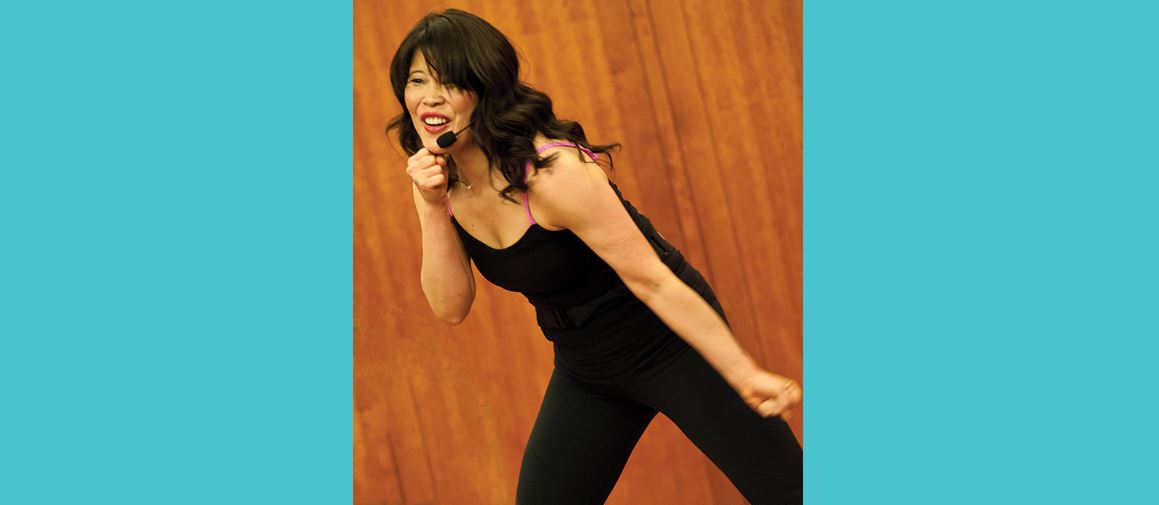It sounds almost too good to be true: There’s one simple thing we all can do that may help improve our mood, sharpen our focus, and maybe even protect our brain from conditions that include depression, Alzheimer’s disease, and dementia.
Move.
“Simply moving your body may have immediate, long-lasting, and protective benefits for your brain,” says Wendy Suzuki, a neuroscientist at New York University. “Physical activity is the most transformative thing you can do for your brain today.”
The brain-changing benefits of exercise is the area of Suzuki’s research, the topic of her 2017 TED Talk, and of her book Healthy Brain, Happy Life: A Personal Program to Activate Your Brain and Do Everything Better. It’s also deeply personal. Suzuki’s late father was diagnosed with Alzheimer’s in 2009, and her daily commitment to exercise is an important element of a strategy, which also includes a healthy diet and proper sleep, to do everything she can to stave off the disease in her own life.
Dr. Suzuki spoke to GetOld.com about the vital role she believes exercise plays in maintaining brain health.
GetOld: How did your interest in how the brain responds to exercise begin?
Suzuki: It began in an experience that will sound very familiar to a lot of people. I was working all the time. I’d become very isolated. I didn’t have a lot of friends outside the lab. I’d also gained 25 pounds. I knew I needed to change and get some balance in my life. I joined a gym, and, to my surprise, I found an exercise class I absolutely loved. Called IntenSati, it combines physical movement, including kickboxing, yoga, and martial arts moves, with positive spoken affirmations.
I began taking the class a few times a week, and, over time, I noticed that not only had I lost those 25 pounds, my brain was working better. I was consistently in a better mood, I had more energy, I had better focus and improved memory, and I was finding it easier to write.
I actually went on to get certified as an IntenSati teacher, so I could bring exercise into the classroom. I’d start my classes with IntenSati sessions, and my students became my research lab. When I tested them after a few months, they completed cognitive tasks faster and got higher scores compared to a control group that didn’t exercise.
GetOld: Now that you’ve been studying the impact of exercise on the brain for several years, what conclusions have you reached?
Suzuki: There are three reasons why I believe that exercise is transformative for your brain. One, it has an immediate effect. After a single workout, you may notice an improvement in mood and in focus that will last at least two hours. Studies also show that a single workout will improve your reaction time.
Two, with long-term exercise, there are changes in the brain’s anatomy, physiology, and function. New blood vessels form, along with new synapses – the brain cells that communicate with each other. These changes may improve both working and long-term memory.
Three, the brain gets stronger and bigger, just the way our muscles do when we work out. Specifically, we see a bulking up in the prefrontal cortex and in the hippocampus. These are the parts of the brain that are associated with cognitive decline as we age and to neurodegenerative diseases like Alzheimer’s, dementia, and Parkinson’s disease.
GetOld: If someone has been inactive, how can they get started with an exercise program that may help protect their brain?
Suzuki: Walking is a good way to begin. If you can do 15 or 20 minutes a day, you may start to protect your brain health. If you’re up for a more vigorous workout, my advice is to find something you love, whether that’s hiking or biking or a class at your local gym. Lots of gyms offer a first class free, so you can try a wide variety of different classes until you find the ones you like.
GetOld: What’s your own workout regimen these days?
Suzuki: I do daily at-home video exercises. It’s so convenient, and it’s something I can do when I travel. For me the habit of getting up and doing some kind of exercise every morning, seven days a week, really works. Some mornings, it’s only 10 or 15 minutes; other days, I’ll have time for 30 or 45 minutes. I subscribe to a service that streams live workout videos, but you can also find lots of free videos online.
